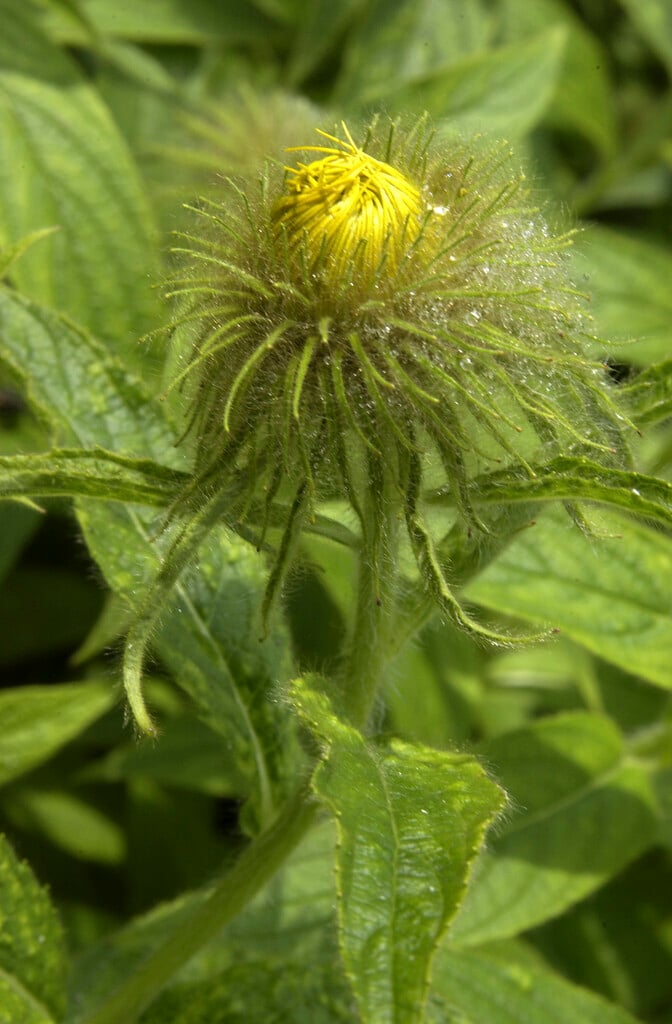Inula orientalis
Georgian fleabane
A compact-growing herbaceous perennial with leafy stems with hairy, mid-green oval or inverted lance-shaped foliage. In summer, large orange-yellow daisy-like flowers with ray-florets that are thin and wavy, emerge from very hairy buds
Size
Ultimate height
0.1–0.5 metresTime to ultimate height
2–5 yearsUltimate spread
0.1–0.5 metresGrowing conditions
Moisture
Moist but well–drained, Well–drainedpH
Neutral, Alkaline, AcidColour & scent
| Stem | Flower | Foliage | Fruit | |
| Spring | Green | |||
|---|---|---|---|---|
| Summer | Yellow | Green | ||
| Autumn | Green | |||
| Winter |
Position
- Full sun
- Partial shade
Aspect
South–facing or West–facing or North–facing or East–facing
Exposure
Exposed or Sheltered Hardiness
H6Botanical details
- Family
- Asteraceae
- Native to GB / Ireland
- No
- Foliage
- Deciduous
- Habit
- Spreading branched
- Genus
Inula may be annuals, herbaceous perennials or sub-shrubs, moslty with large basal leaves and daisy-like yellow flower-heads, often with narrow ray-florets
- Name status
Correct
How to grow
Cultivation
Grows easily in any moisture retentive soil in sun or partial shade
Propagation
Propagate by division in
Suggested planting locations and garden types
- Cottage and informal garden
- Wildflower meadow
- Wildlife gardens
- Flower borders and beds
Pruning
Cut back to ground level at the end of the season
Pests
Generally pest-free
Diseases
Generally disease-free, although powdery mildews may be a problem if the soil is too dry
Get involved
The Royal Horticultural Society is the UK’s leading gardening charity. We aim to enrich everyone’s life through plants, and make the UK a greener and more beautiful place.
